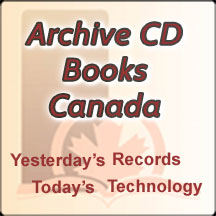Cat No.: CA0424:
The title continues, “Being Notes on the History of Southern British Columbia, and Particularly of the City of Kamloops, Formerly Fort Thompson.”
The “Thompson” of the title is the Thompson river, one of B.C.’s main watershed drains. It joins with the better known Fraser River at Lytton as it flows to empty into the Sea at Vancouver.
Although not physically - and only partially logically - the author, Mark S. Wade, has written this history of the area so that it is told around four major themes:
-The first describes the distribution and structure of the indigenous aboriginal population and goes on to explore the effects and repercussions of their first contact with the few european explorers who arrived by sea or overland by way of the Rocky mountain barrier.
-The second theme tells of the establishment of the outside fur* trade with the attendant coming of the feuding; Hudson’s Bay, NorthWest, and the American (or Pacific) Fur Companies together with their (relatively) few factors, employees, and associates.
* While fur was their primary trading product they also traded in anything their “clients” presented for trade and on which a profit might be taken. It was partially through their “extra curricular” trading in found raw gold that the third theme became of significance.
-The third concerns the staggering impact of the gold rush of the later 1850’s when enormous numbers of “miners” took up residence in what had been barely travelled forest, over just a few years - upwards of 20,000 on the Fraser and Thompson in 1858 alone, for example. Not only did this have an enormous impact on the indigenous residents - and the established trading companies - but it also initiated the accelerated establishment of a european style infrastructure, with its attendant ; “universal**” law and governance, mass mechanized transportation, and rapid communications. This also had the effect of bringing the mainland*** of what was now becoming British Columbia to a significance which warranted its consideration as a part of Canada - with all that implies.
** In the tribal culture the Law was made and enforced by the band Chief and only applied in his limited area of direct influence.
*** Up to this point most pioneering had been restricted to the off-shore islands or limited areas of the mainland.
-The fourth theme takes a more focused look at the development of the city of Kamloops as it becomes a major centre of population and trade throughout the tempestuous progress of the above three contemporary themes, including the decision to apply for confederation into the Dominion of Canada in 1868 and the beginning of the construction of the Transcontinental railway.
This mighty subject is compressed into only 136 pages, 17 of which are devoted to illustrations which are not credited but appear to be reproductions of a mixture of artwork and wonderful, very early, photographic images. The writing style is eminently readable while - at the same time - managing to pack in a healthy serving of facts, dates and names. We have made the text computer searchable and enhanced the search speed by indexing it with FastFind technology.
We invite you to join us in thanking the Community Library of Slocan, and their librarian Joyce Johnson for allowing us to bring you this digital reproduction of another wonderful record of Canada’s, and BC’s, history and rich heritage.
------------------
Aboriginal populations* featured include:
Kootenays,
Lillooets,
Okanagans (of Penticton),
Shuswaps,
Similkameens,
Thompsons, &
Tinnehs.
Alternative names for most populations are also given (anglicizations of natural language name?) but only the more familiar (English?) names are quoted here.
Places mentioned include:
Ashcroft
Astoria a.k.a. Fort George,
Egal Pass Landing
Fort Alexandria,
Fort Kootenay,
Kamloops a.k.a Fort Thompson,
Lytton,
New Westminster,
Okanagon (& lake),
Pavilion,
Penticton,
Savona
Spence’s Bridge
Vancouver a.k.a. Fort Vancouver, &
Yale.
Early “men of note” mentioned:
Samuel Black,
Simon Fraser,
Alexander Mackenzie,
Andrew Onderdonk (C.P.R. contractor)
John Peterson (Built Kamloops)
David Stuart,
David Thompson,
John Tod,
No. of CDs is: 1 ; Format is: PDF ; Searchable?: YES;
FastFind: Yes; ISBN No.: 978-1-927503-39-3 ;


